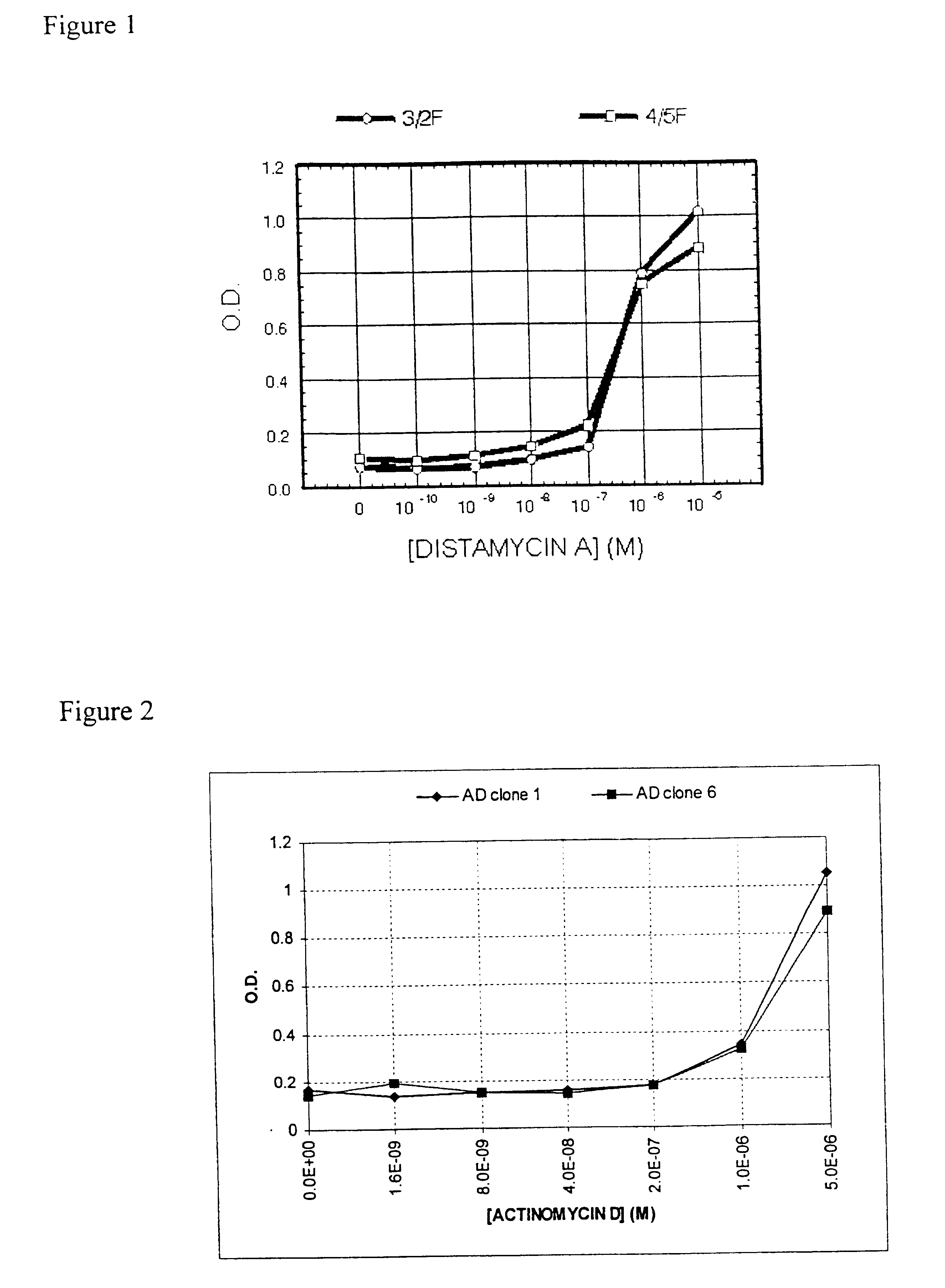Gene switches
a technology of switching molecules and switches, applied in the field of gene switches, can solve the problems of multiple switching molecules, modification may compromise the binding of prior art switching molecules to their polypeptide targets, and the protein-binding switching molecule will not have an effect on the expression of a gene,
- Summary
- Abstract
- Description
- Claims
- Application Information
AI Technical Summary
Benefits of technology
Problems solved by technology
Method used
Image
Examples
example 1
Preparation and Screening of a Zinc Finger Phage Display Library
Selection Of Zinc Finger Phage Binding DNA Targets In The Presence Of Small Molecules
example 1.1
Selection of Zinc Finger Phage that Bind DNA in the Presence of Distamycin A
A powerful method of selecting DNA binding proteins is the cloning of peptides (Smith (1985) Science 228, 1315-1317), or protein domains (McCafferty et al., (1990) Nature 348:552-554; Bass et al., (1990) Proteins 8:309-314), as fusions to the minor coat protein (pIII) of bacteriophage fd, which leads to their expression on the tip of the capsid. A phage display library is created comprising variants of the middle finger from the DNA binding domain of Zif268.
Materials and Methods
Construction and Cloning of Genes
In general, procedures and materials are in accordance with guidance given in Sambrook et al., Molecular Cloning. A Laboratory Manual, Cold Spring Harbor, 1989. The gene for the Zif268 fingers (residues 333-420) is assembled from 8 overlapping synthetic oligonucleotides (see Choo and Klug, (1994) PNAS (USA) 91:11163-67), giving SfiI and NotI overhangs. The genes for fingers of the phage library are syn...
example 1.2
Selection of Zinc Finger Phage Binding DNA in the Presence of Actinomycin D
An adaptation to the method outlined in the Example 1.1 was used to isolate phage that bound DNA in the presence of a different small molecule, actinomycin D. In this example the DNA target was AGCTTGGCG.
Phage Selection
Essentially the method was the same as used in the previous section using four rounds of a preselection step followed by a selection step, washing and elution. Differences in the method are described. The preselection step comprised of 7.5 pmol of biotinylated DNA target site immobilised on 18.75 .mu.l streptavidin coated beads (Dynal) in a 100 .mu.l mixture containing 4 .mu.l phage library 96 .mu.l PBS, 2% Marvel, 1% Tween-20, 50 .mu.M ZnCl.sub.2 for 1 hour at room temperature with constant mixing. Phage selections were made in streptavidin coated tubes with the phage supernatant, 5 nM biotinylated target DNA, 10 .mu.M actinomycin D in the presence of 1 .mu.g poly [d(I-C)] competitor. The sele...
PUM
| Property | Measurement | Unit |
|---|---|---|
| wavelengths | aaaaa | aaaaa |
| pH | aaaaa | aaaaa |
| time | aaaaa | aaaaa |
Abstract
Description
Claims
Application Information
 Login to View More
Login to View More - R&D
- Intellectual Property
- Life Sciences
- Materials
- Tech Scout
- Unparalleled Data Quality
- Higher Quality Content
- 60% Fewer Hallucinations
Browse by: Latest US Patents, China's latest patents, Technical Efficacy Thesaurus, Application Domain, Technology Topic, Popular Technical Reports.
© 2025 PatSnap. All rights reserved.Legal|Privacy policy|Modern Slavery Act Transparency Statement|Sitemap|About US| Contact US: help@patsnap.com



